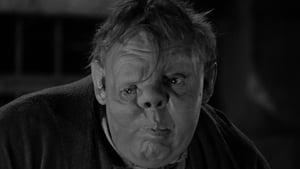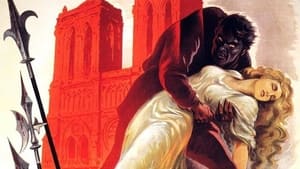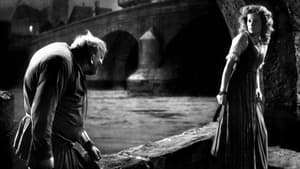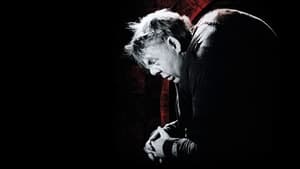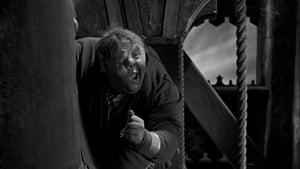Contact: info@alwanfilm.com
Video Sources 0 Views
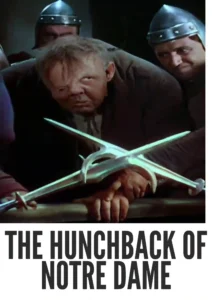
Synopsis
The Hunchback of Notre Dame 1939 Colorized Review: A Timeless Tale Brought to Life on Screen

Introduction
The year 1939 saw the release of one of the most iconic adaptations of Victor Hugo’s classic novel, The Hunchback of Notre Dame. Directed by William Dieterle, this film not only brings Hugo’s poignant story to the screen but also highlights the artistry and storytelling prowess of Golden Age Hollywood. Known for its magnificent sets, groundbreaking performances, and richly detailed costumes, The Hunchback of Notre Dame (1939) remains a cinematic masterpiece. This article explores the impact of The Hunchback of Notre Dame, examining its timeless themes, powerful performances, and the lasting legacy it holds in film history.
Check The Full Colorized Movies List
Check Our Colorized Movies Trailer Channel
Understanding The Hunchback of Notre Dame 1939 Colorized: Director, Cast, and Genre
William Dieterle’s Vision and Directorial Genius
William Dieterle, a director celebrated for his flair for the dramatic and historical epics, approached The Hunchback of Notre Dame with the ambition of creating a visual and emotional spectacle. Dieterle’s adaptation aims to capture the Gothic mood and complex moral undertones of Hugo’s novel. With meticulous attention to set design and a focus on the character-driven narrative, Dieterle succeeded in delivering a film that felt both epic and intimate, a balance that has cemented this adaptation as a classic. Dieterle’s direction is restrained yet powerful, allowing the characters’ inner turmoil and the grandiosity of Notre Dame to take center stage.
Iconic Performances: Charles Laughton and Maureen O’Hara
The Hunchback of Notre Dame features Charles Laughton as Quasimodo, the titular hunchback, and Maureen O’Hara as the beautiful and compassionate Esmeralda. Laughton’s portrayal of Quasimodo is nothing short of transformative. Known for his commanding screen presence, Laughton delivered a performance that captured the hunchback’s vulnerability, loneliness, and fierce loyalty. His use of body language, expressions, and his physical transformation into Quasimodo through extensive makeup made Laughton’s Quasimodo one of cinema’s most unforgettable characters.
Maureen O’Hara, in her Hollywood debut, portrayed Esmeralda with both strength and innocence. Her compassion and resilience resonate throughout the film, making her character a symbol of hope in a world filled with cruelty and judgment. Together, Laughton and O’Hara’s performances bring depth to their characters, creating a poignant portrayal of two marginalized souls connected by fate.
Exploring the Genre: Drama and Romance in a Historical Setting
The Hunchback of Notre Dame (1939) blends elements of drama, romance, and historical epic, showcasing Hugo’s exploration of love, loss, and societal prejudice. Set in 15th-century Paris, the film’s setting, costumes, and production design emphasize the period’s dark and oppressive atmosphere. The grandeur of the Notre Dame Cathedral serves as a powerful backdrop to the story, adding to the film’s dramatic appeal and immersing viewers in the historical and cultural context of medieval France.
Exploring the World of The Hunchback of Notre Dame 1939 Colorized: Plot and Characters
Detailed Synopsis
The film follows the tragic life of Quasimodo, a disfigured and lonely bell-ringer of Notre Dame Cathedral. He has spent his life shunned by society, finding solace only in the massive stone walls of the cathedral. His path intersects with that of Esmeralda, a beautiful and kind-hearted gypsy dancer falsely accused of a crime by the corrupt and hypocritical judge, Frollo. The story unfolds with Quasimodo’s unlikely heroism as he protects Esmeralda from the injustices of society and the cruelty of those in power.
Through a series of dramatic events, the film explores themes of prejudice, love, and redemption, leading to a climax that is both heartbreaking and profound. The characters’ struggles against a cruel and unforgiving society make the story timeless, and the central love story between Quasimodo and Esmeralda adds a layer of tragic romance that enhances the film’s emotional depth.
Key Characters and Their Impact
Quasimodo, portrayed by Laughton, is a complex and deeply sympathetic character whose deformity isolates him from society. Despite his appearance, Quasimodo’s heart is kind, and his love for Esmeralda is pure and unselfish. Esmeralda, played by O’Hara, is a symbol of innocence and resilience, her compassion drawing people to her even as society seeks to condemn her.
Frollo, played by Cedric Hardwicke, is a chilling antagonist whose moral hypocrisy and desire for control highlight the dangers of self-righteousness and the abuse of power. Together, these characters create a narrative that challenges societal norms and questions the true nature of beauty and humanity.
The Art of Film Adaptation: Bringing Hugo’s Vision to Life
Challenges in Adapting a Literary Masterpiece
Adapting The Hunchback of Notre Dame for the screen posed unique challenges. Victor Hugo’s novel is dense with social commentary, symbolism, and complex character studies. The film adaptation had to distill these elements into a visually compelling narrative while remaining faithful to the spirit of the novel. Dieterle’s adaptation captures the essence of Hugo’s work, focusing on the themes of injustice, compassion, and redemption, which are central to the story.
Innovations in Set Design and Cinematography
The 1939 adaptation is renowned for its elaborate set design, particularly the recreation of Notre Dame Cathedral. The production team constructed one of the most intricate and expansive sets of its time, capturing the cathedral’s Gothic splendor and grandeur. The cinematography, with its use of shadow and light, further enhances the film’s dramatic impact, reinforcing the Gothic atmosphere of medieval Paris. The attention to detail in set design and cinematography is part of what makes the 1939 adaptation visually striking and enduring.
Themes Explored in The Hunchback of Notre Dame 1939 Colorized
Prejudice and Social Injustice
One of the film’s central themes is the prejudice faced by both Quasimodo and Esmeralda. Quasimodo, due to his appearance, is subjected to mockery and abuse, while Esmeralda is discriminated against for her ethnic background. The film’s portrayal of these injustices remains relevant today, highlighting the societal tendency to judge individuals based on superficial attributes rather than their character.
Love and Sacrifice
Quasimodo’s love for Esmeralda is one of the film’s most poignant elements. Despite knowing that his love may never be reciprocated, Quasimodo is willing to protect Esmeralda at any cost. This selfless love serves as a powerful counterpoint to the destructive desire of Frollo, illustrating the purity of love that is devoid of selfishness.
The Nature of True Beauty
Through Quasimodo’s character, the film challenges conventional notions of beauty. Though he is outwardly disfigured, Quasimodo possesses inner beauty and kindness, contrasting sharply with the morally corrupt yet outwardly handsome Frollo. The film suggests that true beauty lies within, a message that continues to resonate across generations.
Reception and Legacy of The Hunchback of Notre Dame 1939 Colorized
Critical Acclaim and Audience Reception
Upon its release, The Hunchback of Notre Dame received widespread acclaim for its performances, particularly Laughton’s portrayal of Quasimodo. Critics praised the film’s grand production values, powerful narrative, and emotional depth. It was regarded as a cinematic achievement and a respectful adaptation of Hugo’s novel, and its success cemented Charles Laughton as one of the most versatile and talented actors of his time.
The film’s commercial success also proved that audiences were eager for adaptations of classic literature that retained their emotional and social impact. The film’s legacy as a classic adaptation of Hugo’s novel remains intact, and it continues to be celebrated for its influence on period dramas and historical adaptations.
Influence on Cinema and Popular Culture
The 1939 adaptation of The Hunchback of Notre Dame has left an indelible mark on cinema. It set a high standard for future literary adaptations, inspiring filmmakers to pursue ambitious projects that tackle complex themes. The film’s portrayal of Quasimodo became iconic, influencing subsequent adaptations of Hugo’s novel across various media, including animated films, musicals, and stage adaptations.
Where to Watch The Hunchback of Notre Dame 1939 Colorized Online
For those interested in experiencing this cinematic masterpiece, The Hunchback of Notre Dame (1939) is available on several streaming platforms. Amazon Prime Video, Turner Classic Movies, and other classic movie streaming services offer the film for rent or purchase. Additionally, DVD and Blu-ray editions provide access to special features and restored versions of the film, making it accessible to both longtime fans and new viewers alike.
FAQs About The Hunchback of Notre Dame 1939 Colorized
Q: Is the 1939 version of The Hunchback of Notre Dame a faithful adaptation of Victor Hugo’s novel?
A: While it captures the essence of Hugo’s themes and characters, the 1939 adaptation makes some changes for cinematic purposes. However, it remains one of the most faithful and respected adaptations of the novel.
Q: What makes Charles Laughton’s portrayal of Quasimodo so iconic?
A: Laughton’s transformation into Quasimodo involved extensive makeup and a nuanced performance that conveyed both the character’s physical suffering and his emotional depth. His portrayal remains one of the most powerful interpretations of Quasimodo.
Q: What are the main themes of The Hunchback of Notre Dame (1939)?
A: The film explores themes of prejudice, love, sacrifice, and the nature of true beauty. It emphasizes the importance of compassion and challenges societal judgments based on appearance and background.
Conclusion
The Hunchback of Notre Dame (1939) endures as a timeless adaptation of Victor Hugo’s novel, blending drama, romance, and social commentary with stunning visual storytelling. William Dieterle’s direction, coupled with Charles Laughton’s transformative performance as Quasimodo, creates a film that is both powerful and emotionally resonant. With its exploration of universal themes and its impressive production, the 1939 adaptation continues to captivate audiences, reminding us of the enduring power of classic cinema. Whether viewed for the first time or revisited as a beloved favorite, The Hunchback of Notre Dame (1939) remains a true masterpiece of Hollywood’s Golden Age.
